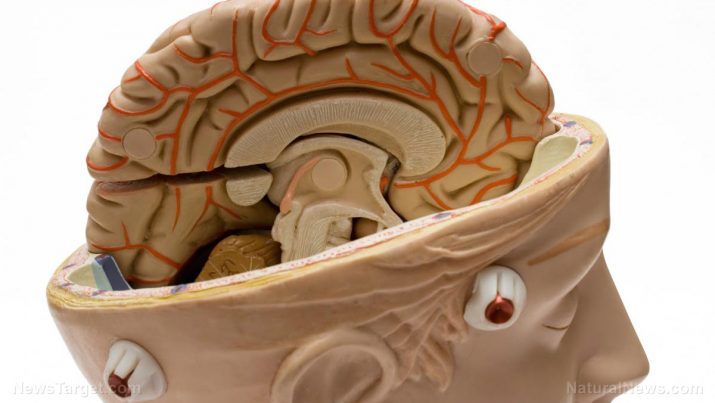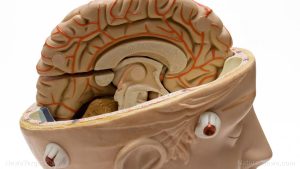
Chorea – causes, side effects and treatments at NaturalPedia.com
Friday, February 16, 2018 by Zoey Sky
http://www.naturalpedia.com/chorea-causes-side-effects-and-treatments-at-naturalpedia-com.html

Chorea is a type of dyskinesia or involuntary movement. An individual with chorea experiences “sudden, rapid, involuntary, and purposeless movements” that happen during normal voluntary movement. Chorea is a clinical symptom related to different etiologies like “infectious, inflammatory, vascular, hereditary (e.g. Huntington’s disease), drug-induced, degenerative, and neoplastic causes.”
Choreic movements occur due to muscle contractions in the hands, forearms, lower legs, and face. The contractions can sometimes occur in the face and the chest.
Choreic movements are different from regular movement. They are usually abrupt and insignificant with an “abnormal appearance.” The term chorea comes from the Greek word that means “to dance,” and choreic movements will “tend to flow from one part of the body to adjacent parts,” which gives the impression of dancing. Chorea often affects both sides of the body, but when an individual experiences involuntary movements in only one side, the condition is called hemichorea.

Known side effects of chorea
When a person is diagnosed with chorea, they may experience side effects that include involuntary dance-like movements involving the hands, feet, and face:
- The nose may wrinkle;
- The eyes may continually flit; and
- The mouth or tongue may continually move
Choreic movements are not rhythmic, but they “seem to flow from one muscle to the next. These movements can even blend into “purposeful or semipurposeful acts” that might make it hard to identify the chorea.
Chorea and athetosis, or “a continuous stream of slow, flowing, writhing involuntary movements,” may occur together as choreoathetosis. Both often cause writhing and dance-like movements.
Athetosis often affects the hands and feet and its symptoms include slow writhing movements. The movements may alternate with holding parts of the limbs in certain positions/postures, producing a flowing stream of movement.
If chorea and athetosis occur together, the movements are slower than in the former but faster than in the latter.
Individuals with the following conditions are at risk for chorea:
- Huntington’s disease/Huntington’s chorea — One of the most common causes of chorea, Huntington’s disease is a progressive neurological disease that causes personality changes and dementia.
- Hyperthyroidism — Chorea may manifest as a symptom in at least two percent of hyperthyroidism cases among patients aged 20 to 40.
- Pregnancy — While rare, chorea may manifest during pregnancy. The condition is called chorea gravidarum.
- Senile chorea — Chorea may occasionally occur in people older than 60, even though they have no underlying illness that could cause chorea. Called senile chorea, symptoms often develop gradually.
- Sydenham’s chorea — When chorea occurs because of rheumatic fever, it is called Sydenham’s Chorea. The condition is also called chorea minor, acute chorea, or rheumatic chorea.
- Vascular disease — Chorea may be caused by a vascular accident in one of the arteries that supply blood to the basal ganglia.
Several medical drugs may cause chorea as a side effect. When this happens, it is called tardive chorea/tardive dyskinesia. Medical drugs that commonly cause tardive chorea include:
- Certain antidepressant medications
- Most of the drugs used to treat psychotic conditions (e.g. schizophrenia)
- Some medications that alleviate nausea
- Women who oral contraceptives may develop chorea, but this is very rare
Body systems harmed by chorea
The pathophysiology, or disordered physiological processes linked to a disease or injury, of chorea are still being studied. However, the disorder is believed to be a consequence of dysfunctional neuronal networks that link the basal ganglia and frontal cortical motor areas and that a deficiency in “inhibitory signals from the basal ganglia” cause the involuntary movements.
Food items or nutrients that may prevent chorea
The following can help prevent chorea:
- Agaricus/Agaricus muscarius –– A “very poisonous fungus,” this remedy must be handled carefully when used to treat chorea. The whole mushroom is used either fresh or dried. Agaricus is chopped, macerated, and steeped in alcohol then strained to obtain a mother tincture, or the base of a homeopathic remedy.
- Silver nitrate/Argentum nitricum/Hell stone — To obtain its mother tincture, silver nitrate is dissolved in alcohol.
- Ignatia/Ignatia Amanra/St. Ignatius’s beans — Dried Ignatia beans are used to create a mother tincture. The beans are powdered and steeped in alcohol to obtain the tincture.
Treatments, management plans for chorea
Treatments and management plans for chorea include medical care and surgical care.
Medical care — Only symptomatic treatment is available for individuals with chorea.
- Coenzyme Q10 and minocycline — These two are proposed as potential therapies. The former can target mitochondrial dysfunction while the latter has anti-apoptosis effects.
- Dopamine-depleting agents — Includes reserpine and tetrabenazine.
- Drug treatment for hemiballism — A possible treatment due to “the high spontaneous remission rate for the disorder.”
- GABAergic drugs — Includes clonazepam, gabapentin, and valproate, which are used as adjunctive therapy.
- Intravenous immunoglobulin and plasmapheresis — Can shorten the course of the illness and decrease symptom severity in patients with Sydenham chorea.
- Neuroleptics — Can help block dopamine receptors.
- Steroid treatment — Effective for chorea following cardiac transplantation.
Surgical care includes:
- Deep brain stimulation — Considered a possible treatment due to several cases where it benefited patients.
- Cell transplantation — A controversial treatment, cell transplantation remains “in early stages of research.”
Where to learn more
- Five powerful ways coconut oil boosts brain function and protects against disease
- Got a Chronic Health Problem: You Just Might Have Celiac Disease
- Healthy benefits of epazote explained
- Misdiagnoses rampant among psych drug users; children with digestive problems being labeled schizophrenic, drugged with deadly SSRIs
- Your Daily Additives – MSG
Summary
Chorea is a type of dyskinesia or involuntary movement. An individual with chorea experiences “sudden, rapid, involuntary, and purposeless movements” that happen during normal voluntary movement.
When a person is diagnosed with chorea, they may experience side effects that include involuntary dance-like movements involving the hands, feet, and face.
The mother tinctures of Agaricus/Agaricus muscarius, silver nitrate/Argentum nitricum/Hell stone, and Ignatia/Ignatia Amanra/St. Ignatius’s beans can be used to help prevent chorea.
Treatments and management plans for chorea include medical care and surgical care.
Sources include
Tagged Under: Tags: chorea





